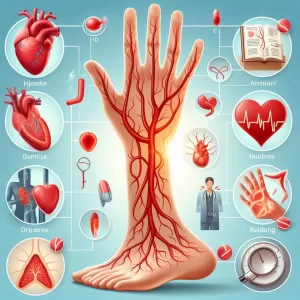What is Musculoskeletal Surgery: Overview, Benefits, and Expected Results
Headline: Discover the Enchanting World of [Product Name]
Body: Embark on a captivating journey into the realm of [Product Name], where innovation meets elegance. Immerse yourself in a symphony of features that redefine the boundaries of possibility. From its sleek design to its cutting-edge technology, [Product Name] is a masterpiece crafted to elevate your experience.
Call to Action: Unleash the power of [Product Name] today and unlock a world of endless possibilities. Visit our website to learn more and experience the magic firsthand.
Rewritten Excerpt:Headline: Unveiling the Enchantment: [Product Name] - A Journey of Innovation and Elegance
Body: Prepare to be captivated as you enter the enchanting realm of [Product Name], where innovation and elegance intertwine to create a masterpiece. Discover a symphony of features that transcend the ordinary, pushing the boundaries of possibility. From its sleek design that commands attention to its cutting-edge technology that empowers your every move, [Product Name] is a testament to the fusion of art and functionality.
Call to Action: Embark on this extraordinary journey today and unlock the boundless potential of [Product Name]. Visit our website to immerse yourself in the magic and experience firsthand the transformative power of innovation and elegance.
Definition and Overview
Musculoskeletal surgery refers to a number of surgical procedures that aim to improve, manage, or treat disorders, diseases, injuries, or congenital conditions of the musculoskeletal system. This organ system, which involves the bones, joints, tendons, ligaments, and muscles, is responsible for providing form and support, ensuring stability, and allowing movement to the human body.
Musculoskeletal surgical procedures are performed by surgeons specializing in orthopaedics.
Who Should Undergo and Expected Results
Patients who have the following issues can be considered ideal candidates for musculoskeletal surgery provided that their physicians have determined that it is the best treatment after assessing the risks and benefits of the procedure:
Injury. Trauma can be caused by a wide variety of factors, but many patients suffer from injury due to sports and accidents. Injury can involve fractures and dislocated bones.
Musculoskeletal disorders. This category includes epicondylitis, carpal tunnel syndrome, and tendinitis. Musculoskeletal disorders can be caused by repetitively carrying heavy loads over a long period of time, doing heavy tasks with an improper posture, and even participating in sporting activities. Athletes are susceptible to musculoskeletal disorders, since they perform the same tasks over and over again through the course of training.
Degenerative diseases. These are diseases that cause the degeneration of the joints, bones, and surrounding tissues and muscles. Examples include:
- Arthritis. This disease is characterized by joint inflammation, and there are two kinds: osteoarthritis and rheumatoid arthritis. The former causes stiffness in the joints, pain, and enlargement of the affected bones while the latter causes stiffness or soreness of the joints, and can lead to bone deformity over time.
- Osteoporosis. This disease often affects older women, and involves the loss of bone density, leading to serious fractures in vital parts of the body, such as the pelvic bone, legs, and arms.
Herniated intervertebral disk. In this condition, the patient’s vertebrae pinch nerve roots, and can cause severe pain and limited mobility.
Cancers of the musculoskeletal system. These are relatively aggressive forms of tumour growth. When left untreated, these cancers can result in the loss of an affected limb, or fatal metastasis over time.
Infections, including osteomyelitis, which involves fungi or bacteria invading the patient’s bone. Younger patients will often contract this infection in the longer bones of the body, such as those in the legs and the arms. In adults, however, osteomyelitis occurs in the feet and spine. If left untreated, infections can severely damage the bone and permanently affect the way the patient moves around. Osteomyelitis is often accompanied by an inflammation in the area, stiffness, and heaviness to the body or affected limb, as well as fever.
How is the Procedure Performed?
Different techniques can be used in musculoskeletal surgery. In the past, musculoskeletal surgery is invasive, but in the last couple of years, less invasive procedures have been developed to minimize the recovery time, risks, and complications of surgery.
Common musculoskeletal surgical procedures include the following:
Hip replacement, which involves the removal of one of the largest joints in the body. The damaged hip is replaced with a prosthesis, which aims to relieve pain, improve the joint’s function and improve mobility over time. The majority of the patients are over sixty years old, and common prosthesis materials include metal alloys and ceramic.
Knee replacement, a routine operation often recommended for patients with arthritis. This procedure can be a total or partial replacement and may involve one or more sides of the knee joints.
Reconstruction of the anterior cruciate ligament (ACL), which involves a ligament in the knee. ACL injuries are common among athletes participating in sports such as basketball, rugby, football, tennis, and skiing. The procedure is performed by attaching new tissues to the torn ligament.
Carpal tunnel surgery, which can be performed through endoscopy or an open technique. Many patients opt for endoscopic surgery because it is minimally invasive and only requires small incisions in the palm and wrist.
Rotator cuff tendon repair for torn muscles and tendons surrounding the shoulder joints can be performed with an open repair, through arthroscopy, or a partially open repair that also employs an arthroscope.
Lumbar spinal fusion is often recommended for patients suffering from degenerative disc disease, and involves the addition of a bone graft to a targeted section of the spine. Bone grafts can also be encouraged to grow in the affected section of the lumbar spine through stimulated biological responses.
Ankle fracture repair, which can involve holding together the broken bones using biocompatible screws and metal plates.
Depending on the type of surgery, the surgery may be performed under general or local anaesthetics.
Possible Risks and Complications
As with any surgical procedure, there are a number of possible risks and complications involved with musculoskeletal surgery, including the following:
- Allergy or adverse reactions to anaesthesia
- Infection (including osteomyelitis, which can enter the bone through surgery sites)
- Excessive bleeding
- Formation of blood clots
- Minor or severe nerve damage
Limited mobility
References:European Agency for Safety and Health at Work: “Musculoskeletal Disorders”
- American Board of Orthopaedic Surgery
/trp_language]
**Question: What is Musculoskeletal Surgery?**
**Answer:** Musculoskeletal surgery encompasses a specialized branch of medicine focused on treating disorders, injuries, and ailments affecting the musculoskeletal system. It primarily involves surgical interventions on bones, joints, muscles, tendons, ligaments, and other associated structures.
**Question: What Range of Conditions Does Musculoskeletal Surgery Address?**
**Answer:** Musculoskeletal surgery addresses various orthopedic conditions, including but not limited to:
* Osteoarthritis and Rheumatoid Arthritis: Surgical interventions aim to relieve pain and restore joint function.
* Sports Injuries: Surgical repair of ligaments, tendons, and muscles damaged through sports activities.
* Bone Fractures: Surgical procedures range from setting and splinting simple fractures to complex surgeries involving internal fixation or reconstruction.
* Spine Conditions: Surgical interventions address issues like herniated discs, spinal stenosis, and scoliosis.
* Deformity Correction: Surgical correction of skeletal deformities, such as bowlegs and knock-knees.
**Question: What are the Benefits of Musculoskeletal Surgery?**
**Answer:** Musculoskeletal surgery offers several benefits, including:
* Pain Relief: Surgical procedures aim to alleviate pain caused by various musculoskeletal conditions, improving overall quality of life.
* Restoration of Joint Function: Surgical interventions strive to restore joint function, allowing individuals to perform daily activities more comfortably and efficiently.
* Mobility Enhancement: Musculoskeletal surgery can improve mobility, reducing limitations imposed by orthopedic conditions.
* Deformity Correction: Surgical interventions can correct skeletal deformities, enhancing both aesthetics and functionality.
**Question: What are the Expected Results of Musculoskeletal Surgery?**
**Answer:** Expected results of musculoskeletal surgery vary depending on the specific condition and the complexity of the surgical procedure. Nevertheless, successful outcomes often include:
* Reduced Pain: Significant reduction in pain associated with the musculoskeletal condition, improving overall well-being.
* Improved Joint Function: Restored range of motion and functionality of the affected joint, facilitating daily activities.
* Enhanced Mobility: Improved ability to move, walk, or perform physical tasks, increasing overall mobility.
* Deformity Correction: Successful correction of skeletal deformities, resulting in improved aesthetics and function.
**Question: How Can Musculoskeletal Surgery Be Accessed?**
**Answer:** To access musculoskeletal surgery, follow these steps:
* Consult a Medical Professional: Schedule an appointment with an orthopedic surgeon or your primary care physician to discuss your condition.
* Diagnostic Evaluation: Undergo a thorough physical examination and diagnostic tests, such as X-rays, MRIs, or CT scans, to confirm the diagnosis.
* Treatment Plan Formulation: Collaborate with your doctor to develop a customized treatment plan, potentially involving musculoskeletal surgery.
Musculoskeletal surgery is a vital field of medicine aimed at treating a wide range of conditions affecting the musculoskeletal system. It offers numerous benefits, including pain relief, improved joint function, enhanced mobility, and deformity correction. Consulting a qualified orthopedic surgeon is essential for accurate diagnosis, effective treatment planning, and successful surgical outcomes.
2 Comments
Leave a Reply
Popular Articles








Here is a single comment for the post title:
A comprehensive guide to understanding musculoskeletal surgery, its benefits, and what to expect during and after the procedure.
A comprehensive overview of musculoskeletal surgery, exploring its benefits, and providing insights into the expected outcomes and recovery process.